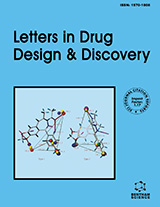Abstract
Dengue virus (DENV) is the member of Flaviviridae and causative agent of Dengue Haemorrhagic Fever and Dengue Shock Syndrome. Every year, around 70% of the world population is at risk, due to epidemic episodes orchestrated by one or more of its serotypes. So, a tetravalent DENV vaccine is needed which may induce the immune response against all four DENV serotypes. In this study, B-cell and T-cell epitopes have been predicted from the DENV envelope glycoprotein (Eg) using a consensus based approach in complement with the physico-chemical property (PCP) conservancy analysis. Through DENV-Eg analysis, a total of 7 PCP conserved, water soluble, in vitro and in vivo stable epitopes were predicted which may induce the B-cell and T-cell mediated anti-viral immune response.
Keywords: Dengue virus, consensus sequence, Envelope glycoprotein, phylogenetic analysis, in silico design.
Current Computer-Aided Drug Design
Title:Development of Global Consensus of Dengue Virus Envelope Glycoprotein for Epitopes Based Vaccine Design
Volume: 11 Issue: 1
Author(s): Mazhar Hussain, Muhammad Idrees and Samia Afzal
Affiliation:
Keywords: Dengue virus, consensus sequence, Envelope glycoprotein, phylogenetic analysis, in silico design.
Abstract: Dengue virus (DENV) is the member of Flaviviridae and causative agent of Dengue Haemorrhagic Fever and Dengue Shock Syndrome. Every year, around 70% of the world population is at risk, due to epidemic episodes orchestrated by one or more of its serotypes. So, a tetravalent DENV vaccine is needed which may induce the immune response against all four DENV serotypes. In this study, B-cell and T-cell epitopes have been predicted from the DENV envelope glycoprotein (Eg) using a consensus based approach in complement with the physico-chemical property (PCP) conservancy analysis. Through DENV-Eg analysis, a total of 7 PCP conserved, water soluble, in vitro and in vivo stable epitopes were predicted which may induce the B-cell and T-cell mediated anti-viral immune response.
Export Options
About this article
Cite this article as:
Hussain Mazhar, Idrees Muhammad and Afzal Samia, Development of Global Consensus of Dengue Virus Envelope Glycoprotein for Epitopes Based Vaccine Design, Current Computer-Aided Drug Design 2015; 11 (1) . https://dx.doi.org/10.2174/1573409911666150529130134
| DOI https://dx.doi.org/10.2174/1573409911666150529130134 |
Print ISSN 1573-4099 |
| Publisher Name Bentham Science Publisher |
Online ISSN 1875-6697 |
 36
36 1
1 1
1 1
1
- Author Guidelines
- Bentham Author Support Services (BASS)
- Graphical Abstracts
- Fabricating and Stating False Information
- Research Misconduct
- Post Publication Discussions and Corrections
- Publishing Ethics and Rectitude
- Increase Visibility of Your Article
- Archiving Policies
- Peer Review Workflow
- Order Your Article Before Print
- Promote Your Article
- Manuscript Transfer Facility
- Editorial Policies
- Allegations from Whistleblowers
Related Articles
-
Thermodynamic and Kinetic Aspects Involved in the Development of Nanocarriers and Drug Delivery Systems Based on Cationic Biopolymers
Current Pharmaceutical Design Signal Transduction Pathways of Inflammatory Gene Expressions and Therapeutic Implications
Current Pharmaceutical Design Targetting Esophageal and Gastric Cancers with Monoclonal Antibodies
Current Topics in Medicinal Chemistry Novel Mechanisms of Anticancer Activities of Green Tea Component Epigallocatechin- 3-Gallate
Anti-Cancer Agents in Medicinal Chemistry 4-Hydroxy-3-methoxyphenyl Substituted 3-methyl-tetrahydroquinoline Derivatives Obtained Through Imino Diels-Alder Reactions as Potential Antitumoral Agents
Letters in Drug Design & Discovery Polymeric Carrier Systems for siRNA Delivery
Current Topics in Medicinal Chemistry Role of Polysaccharides Mimetic Components in Targeted Cancer Treatment
Current Drug Targets c-Myc and Downstream Targets in the Pathogenesis and Treatment of Cancer
Recent Patents on Anti-Cancer Drug Discovery Transmission and Immunopathogenesis of FIV in Cats as a Model for HIV
Current HIV Research Tanshinone IIA: Pharmacology, Total Synthesis, and Progress in Structure-modifications
Current Medicinal Chemistry AMPK as a Potential Anticancer Target - Friend or Foe?
Current Pharmaceutical Design Efficacy and Safety of Combined Radiotherapy with EGFR Inhibitors and Chemotherapy for Laryngeal Organ Preservation in Patients with Locally Advanced Hypopharyngeal Carcinomas
Current Cancer Drug Targets The use of Azoles Containing Natural Products in Cancer Prevention and Treatment: An Overview
Anti-Cancer Agents in Medicinal Chemistry Unknown Primary Squamous Cell Carcinoma of the Head and Neck
Current Cancer Therapy Reviews The Urokinase Plasminogen Activator System: A Target for Anti-Cancer Therapy
Current Cancer Drug Targets Effects of Natural Products on Mcl-1 Expression and Function
Current Medicinal Chemistry Cytotoxic and Anticancer Activities of Isatin and Its Derivatives: A Comprehensive Review from 2000-2008
Anti-Cancer Agents in Medicinal Chemistry Pharmacological Properties and Therapeutic Possibilities for Drugs Acting Upon Endocannabinoid Receptors
Current Drug Targets - CNS & Neurological Disorders Breast Cancer Diagnosis Using Data Mining Methods, Cumulative Histogram Features, and Gary Level Co-occurrence Matrix
Current Medical Imaging Current Role of Proteomics in Pancreatic Cancer Biomarkers Research
Current Proteomics


























